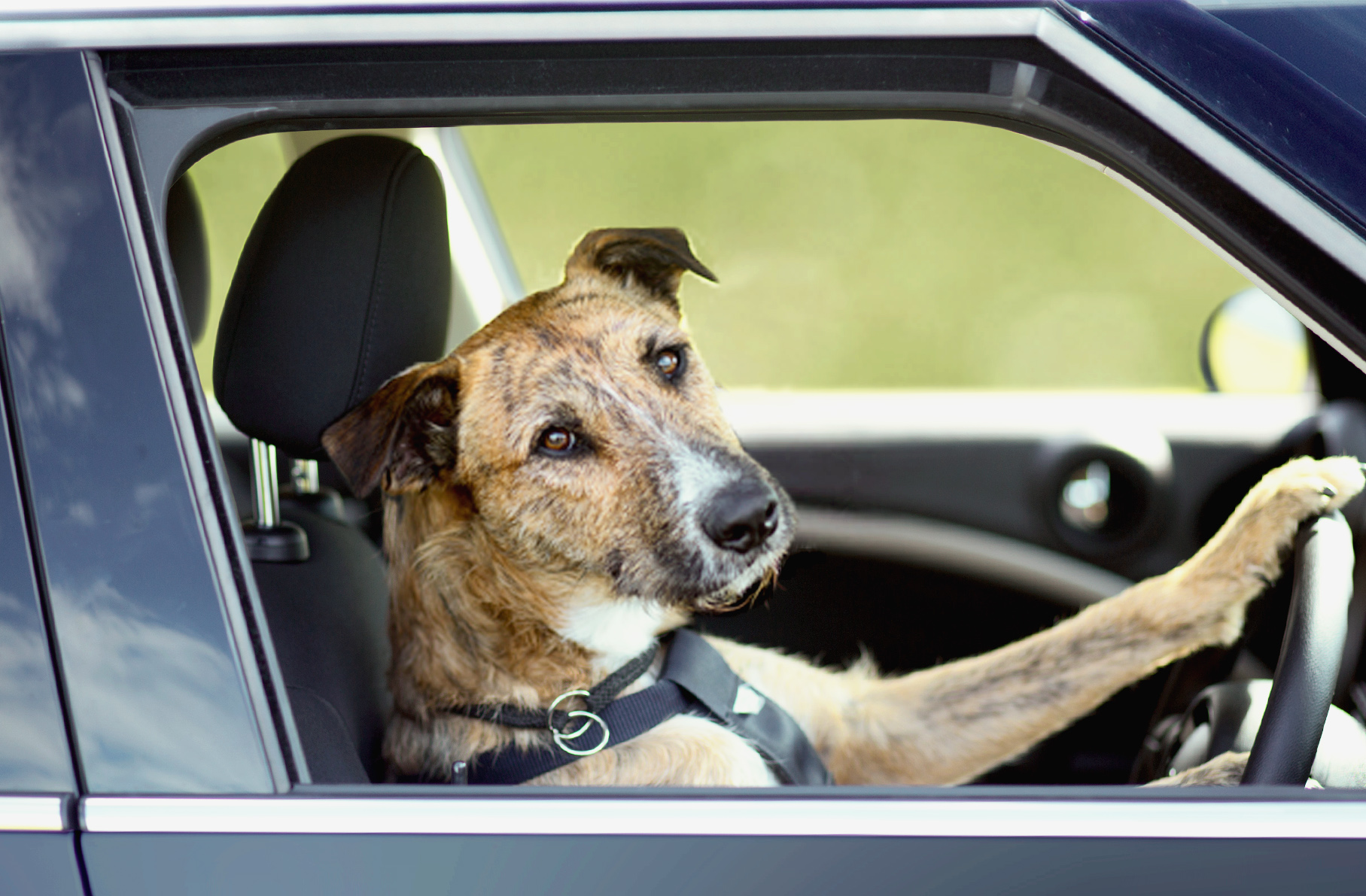Most dogs absolutely love riding in the car. However, traveling with dogs in your vehicle can pose a lot of safety risks. Seat belts and air-bags aren’t designed with canines in mind. And a dog who is unrestrained in the car can provide a distraction to the driver rivaling that of a cell phone. Some countries and states require that dogs be properly restrained or crated in a moving car. Regardless of the laws in your area, it’s wise to make sure your dog doesn’t “help” you drive.
Crates Are Best
When traveling with dogs in a car, the ASPCA recommends securing dogs of all sizes in crates, both for the dog’s safety and to prevent distractions while driving. If possible, crates should be secured in the back seat of a car or the cargo area of an SUV, station wagon, or minivan, and strapped in so that the crate won’t slide around during sudden stops. The crate itself should be large enough for your dog to stand up, turn around, sit and lie down comfortably, while not so large that the dog can get tossed around inside the crate while the car moves. It should also provide plenty of ventilation. You can make the crate more comfortable for your dog by lining the floor with blankets, and even go a step further to safeguard against injury by padding the sides with foam. Just be sure your dog won’t try to eat or chew any material you use for padding.
When a Crate Won’t Work
If a crate is not an option, look for a safety harness that buckles directly into the seat belt buckle, and strap your dog into the back seat. Another commercially available option for safer car travel with dogs is a mesh or metal barrier made to place in minivans, and SUVs to keep your furry guy confined to the back seat. While these options are great for keeping your pup from distracting you or getting underfoot while you’re trying to focus on the road, they’re not designed to protect him from injury during a crash. Although it might seem like these options provide your buddy with more freedom and make his ride more enjoyable, for his own safety, a crate or carrier is still best.
When There Is No Back Seat
While the back of the car is generally safest for your dog, due mainly to potential injury from front-seat airbags, sometimes there isn’t a back seat or cargo hold, as is the case with regular truck cabs or two-seater cars. In this case, it’s best to secure your dog in a crate or carrier in the passenger seat and turn off the passenger-side airbags. If your dog is too large for a crate to fit in the front seat, use a safety harness to buckle him in. Under no circumstances should he be allowed to ride in the back of an open pickup truck.
Traveling in Comfort
Remember that restraining your dog in a car are for your dog’s safety as much as that of yourself and your other passengers. As such, dogs of any size should be safely restrained. Your tiny dog might be perfectly content to curl up in your lap during the trip, but just as it wouldn’t be safe to hold a child in your lap while driving, it’s not any safer for your dog. Securing your pup in a crate or restraining device during your trip, regardless of breed or size, will make it much more likely that you two will reach your destination safely
